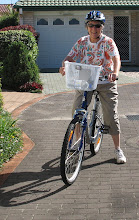
Anyone can face homelessness ...
Whacko! Australia’s one year-old Rudd Government has said it will halve homelessness in Australia and offer supported accommodation to all rough sleepers who need it.
It has set targets to do this by 2020.
The government committed $400 million in the next two years for additional social housing for homeless people and $800 million in four years, being a ‘down payment on a twelve year reform agenda’.
With a national population of only 21.5 million people, that’s a good start for our new year.
As I’ve said before on 70 Plus there is great need, even in this comparative land of plenty:
- 105,000 Australians experience homelessness each night
- 188,000 Australians receive support each year through supported accommodation
- 69,000 of those receiving support are children.
For a dozen years we had seen the gap between rich and poor growing hugely and the problem was largely ignored. This was so far away from our national character that normally called for a fair go for all.
This year for the fourth in a row, our support group for carers of persons suffering mental illness, working with a local Lions Club, distributed a large quantity of Christmas cakes to the most disadvantaged persons we could find.
We discovered people living rough on the local river banks and in parks, families in caravans and refuges. One refuge manager told us on Christmas Eve that she had just been notified to expect a woman with seven children who had become homeless.
The new Prime Minister Kevin Rudd made his heart warming announcement on Christmas Eve, releasing the policy that states:
‘Homelessness is not just the result of too few houses. Its causes are many and varied - domestic violence, a shortage of affordable housing, unemployment, mental illness, family breakdown and drug and alcohol abuse all contribute to the level of homelessness in Australia.’
The Prime Minister said that reducing homelessness was everyone’s responsibility; that Australia’s efforts to reduce it needed to be urgent and well sustained.
And so say all of us!
‘This White Paper addresses the causes of homelessness and provides a framework for preventing homelessness from occurring in the first place’.
The policy promises to support victims of domestic violence to stay safely in their own home; increase public and community housing for people at risk of homelessness; improves tenancy advice and support services; and introduces a policy of ‘no exits into homelessness’ from hospitals, mental health and drug and alcohol services and statutory care.
‘These measures will help prevent more Australians from becoming homeless each year.’
The policy continues:
‘When – despite our best efforts – people become homeless, this White Paper sets out ways to strengthen the provision of services for these Australians.
‘It will help services to provide people who become homeless with the full range of support that they need – rather than leaving individuals to try and navigate a complex system looking for help.
‘Assertive outreach services will work with homeless people bringing people off the streets into the housing they need to end their homelessness permanently.’
More longer-term housing, more public and community housing and the issue of run down and overcrowded housing for Aborigines living in remote areas are all targets of the scheme.
Such an all-round effort to tackle the problem has to be welcomed. Let’s hope that nothing gets in the way of this ambitious plan.
Meanwhile I wish my bloggy mates the very best of wishes for 2009. May you and yours experience happiness, a desire to live peacefully with each other, and tread lightly on the planet.
Here’s a gem from the mouth of babes:
The little boy next door anxiously asked his Mum on the morning of Christmas Eve how long it would be before Santa Claus arrived.
Mum said: ‘just one more sleep, that’s all’.
Mr. Three: Can I have the sleep now?
True story.
What true stories do you have about this Christmas?
By the way - I have just posted episode 11 of my mystery novel 'Paternity' on my literary blog Journeys in Creative Writing. Pip is stalking the ghost of a man who raped her mother ...
On the site, you can also link to episodes 1-10 of this ripping yarn.































































